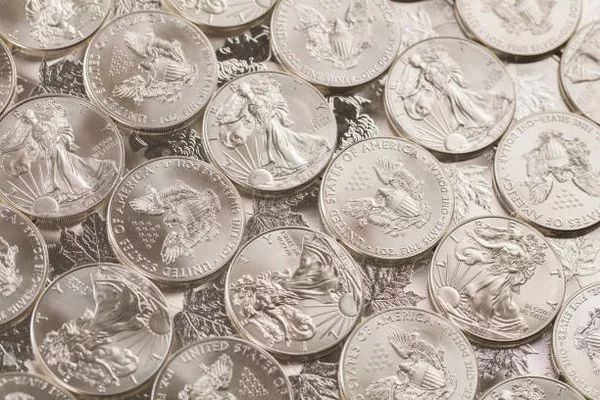Silver American Eagles have long been regarded as some of the most coveted and prestigious silver coins in the world. These iconic bullion coins, first minted in 1986, have captured the hearts of both collectors and investors alike. However, their soaring popularity comes with a significant price tag. In this article, we will delve into the factors that contribute to the high cost of Silver Eagles and explore why they remain so expensive.
Precious Metal Content
One of the primary reasons for the high cost of Silver Eagles is their intrinsic value. These coins contain one troy ounce (31.1035 grams) of 99.9% pure silver, making them a valuable addition to any precious metal portfolio. The price of silver itself plays a significant role in the overall cost of Silver Eagles. Silver prices are influenced by various economic factors, including supply and demand, geopolitical tensions, and inflation concerns. As silver prices rise, so do the costs of producing and acquiring Silver Eagles.
Numismatic Value
Beyond their silver content, Silver Eagles also possess numismatic value, which contributes to their overall expense. Numismatics is the study and collection of coins and currency, and collectors are willing to pay premiums for coins with unique designs, limited mintages, or historical significance. Silver Eagles fit this bill on all fronts.
The U.S. Mint periodically releases special editions of Silver Eagles, such as proof coins, burnished coins, and commemorative issues, which often feature distinctive finishes, mintmarks, or packaging. Collectors eagerly pursue these limited-edition releases, driving up their prices well above the spot price of silver.
Minting Costs
The production of Silver Eagles involves several steps, each with its associated costs. The United States Mint takes great care to ensure the quality and purity of each coin, which results in added expenses. The minting process includes:
a. Silver Blanks: The mint starts with silver blanks, which are carefully manufactured to meet precise specifications. These blanks are subjected to rigorous quality control measures to maintain their purity.
b. Striking Process: Each coin is individually struck multiple times to create the intricate design and sharp details characteristic of Silver Eagles. This process requires highly skilled labor and specialized machinery.
c. Quality Control: After striking, the coins undergo stringent quality control inspections to ensure they meet the U.S. Mint’s exacting standards.
d. Packaging and Distribution: Once minting is complete, Silver Eagles are packaged securely to prevent damage during transit and storage. Distribution to authorized dealers and the secondary market adds to the overall cost.
Secondary Market Demand
Silver Eagles have a thriving secondary market where collectors and investors buy and sell these coins. The demand for Silver Eagles in this market can cause prices to exceed the intrinsic value of the silver they contain. Factors such as coin condition, rarity, and historical significance can significantly impact the price of Silver Eagles in the secondary market.
Additionally, the secondary market for Silver Eagles is influenced by broader economic factors. During times of economic uncertainty or currency devaluation, investors often flock to precious metals like silver as a safe haven. This increased demand can further drive up the cost of Silver Eagles.
Legal Tender Status
Silver Eagles hold a unique status as legal tender in the United States, with a face value of one dollar. While this face value is far below the intrinsic and numismatic value of the coin, it does have legal implications. For example, the sale of Silver Eagles may be subject to different tax regulations than other forms of silver bullion. The legal tender status adds to the complexity and cost of acquiring and selling these coins.
Production Constraints
The United States Mint faces production constraints that limit the number of Silver Eagles minted each year. This finite supply, coupled with increasing demand, exerts upward pressure on prices. The Mint has occasionally struggled to keep up with demand during periods of heightened interest in precious metals, resulting in delays and shortages that further boost the cost of Silver Eagles.
International Appeal
Silver Eagles enjoy global recognition and appeal. Collectors and investors from around the world seek out these coins, contributing to their demand and price. The international appeal of Silver Eagles makes them a desirable addition to diversified portfolios, further elevating their expense.
Conclusion
Silver Eagles are renowned for their beauty, purity, and historical significance, making them a sought-after addition to any collection or investment portfolio. Their cost is influenced by a combination of factors, including the price of silver, numismatic value, minting costs, secondary market demand, legal tender status, production constraints, and international appeal. As long as these factors remain relevant, Silver Eagles are likely to retain their position as a high-value and expensive investment option for both collectors and investors in the precious metals market.


